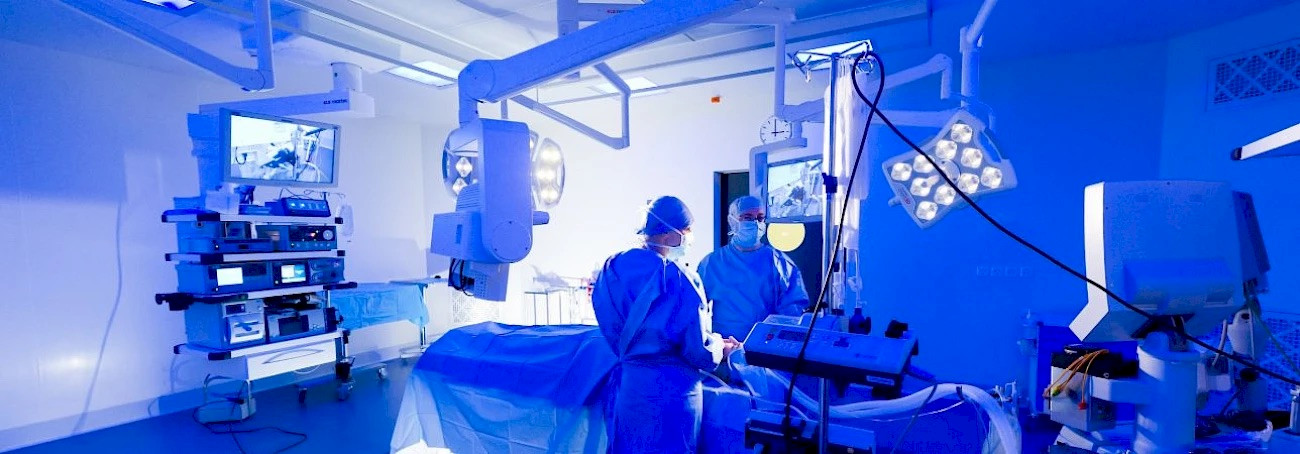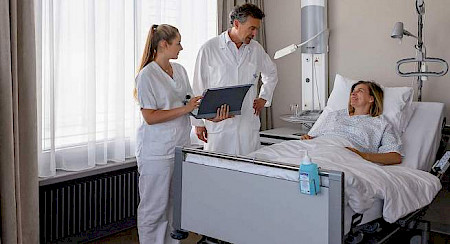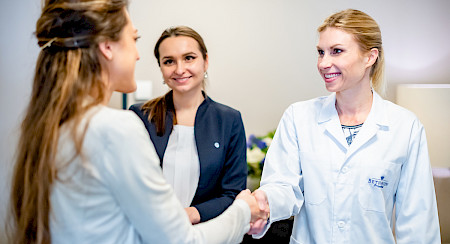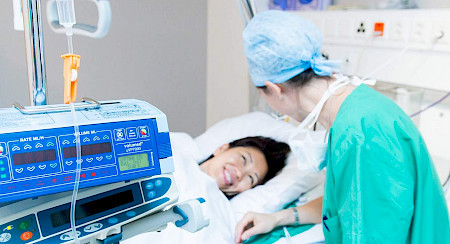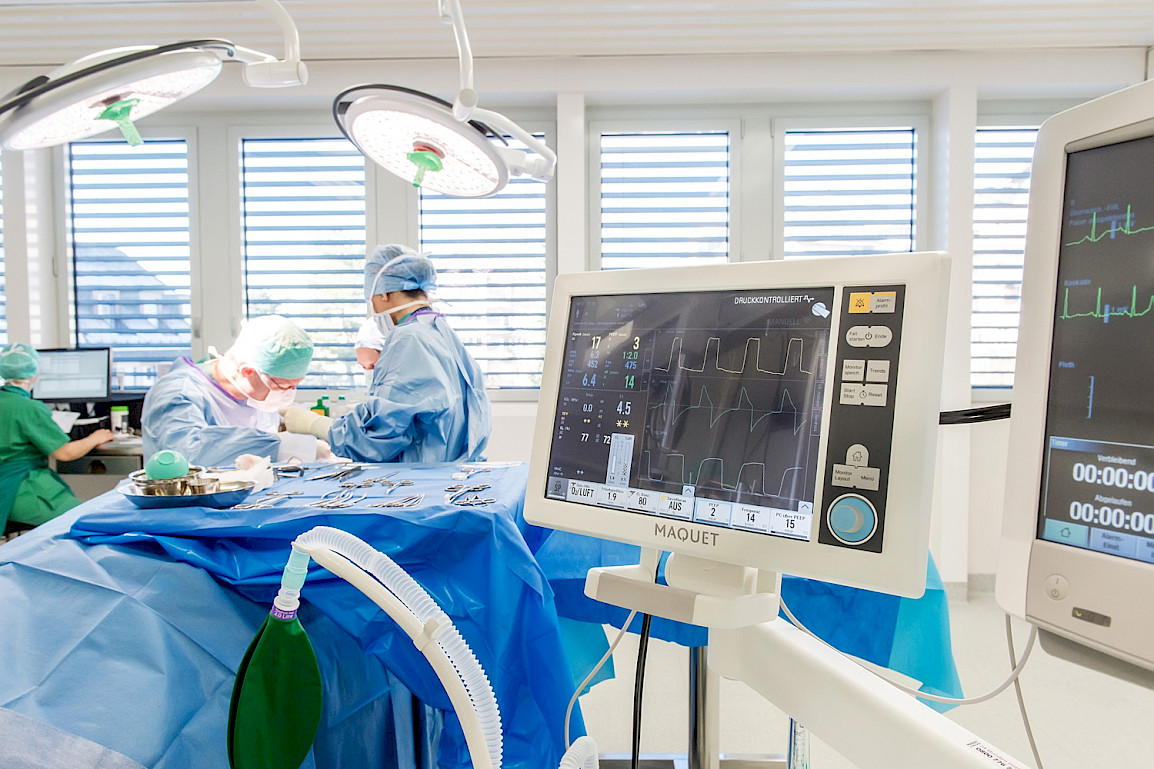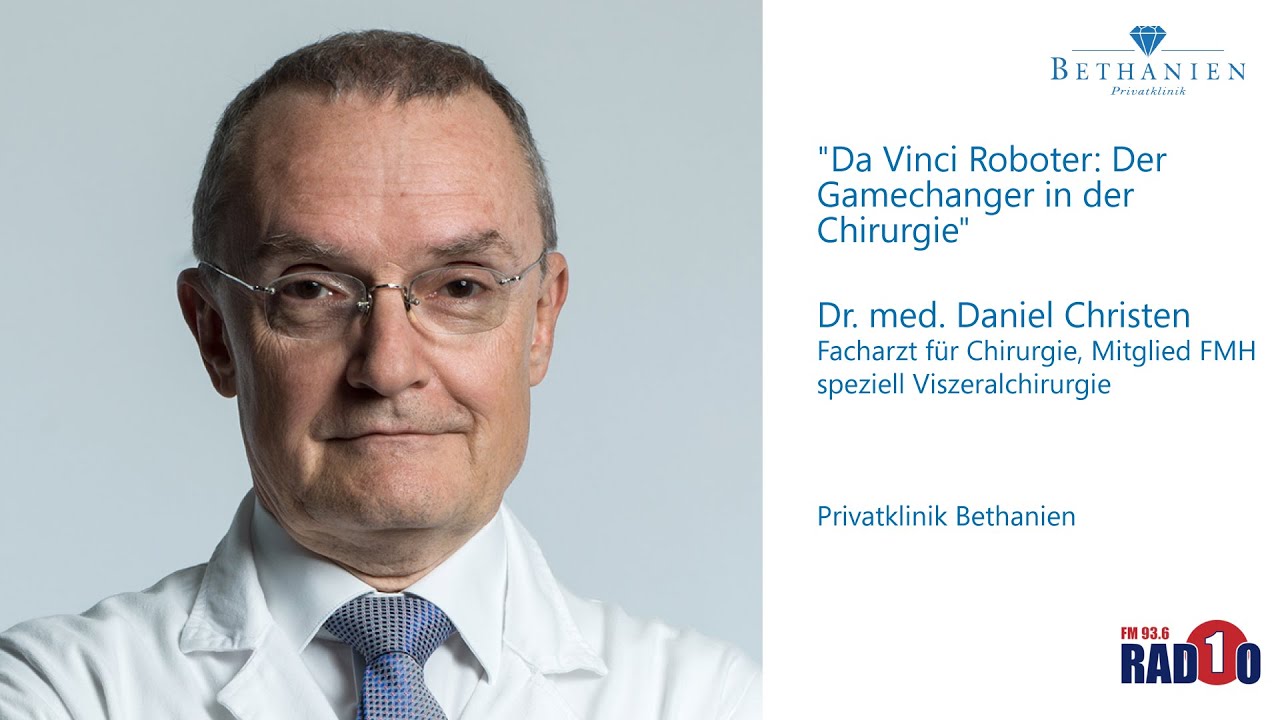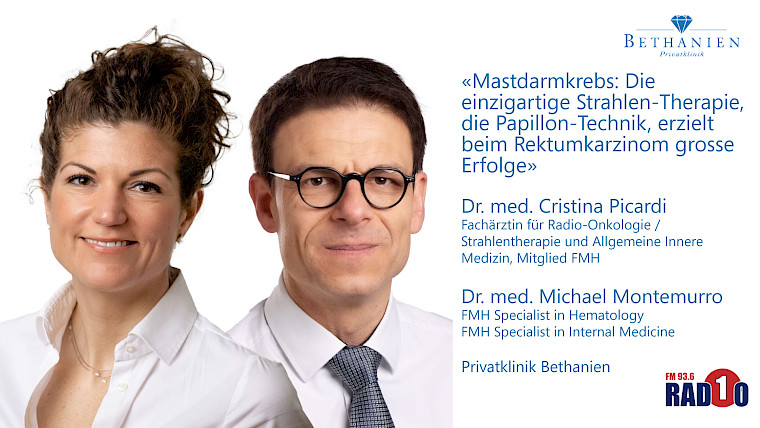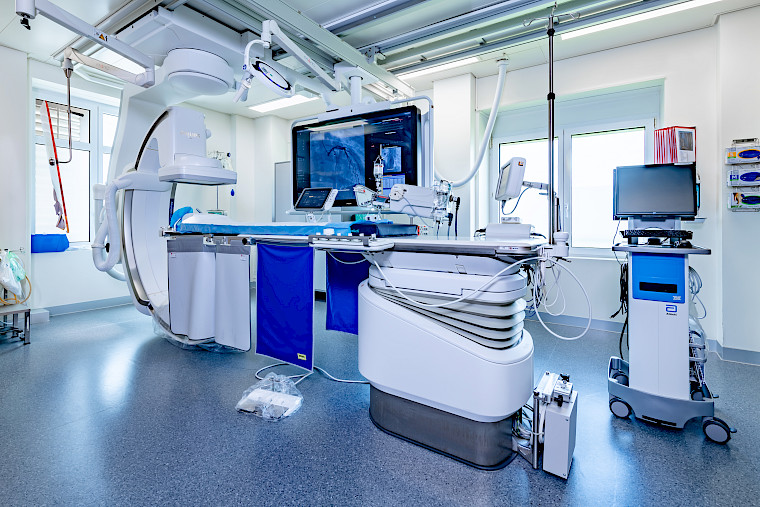The Da Vinci® robot performs minimally invasive procedures in visceral surgery, thoracic surgery and urology. The interdisciplinary Da Vinci® Bethanien team is led by Visceral Surgeon Dr Daniel Christen, Medical Director and Head of Surgery at Privatklinik Bethanien, as well as his colleagues from surgical urology and thoracic surgery. These specialists have many years of experience with the Da Vinci® robot and are a well-coordinated team.
Our day clinic and recovery ward have 13 beds and provide care for our outpatients and inpatients. We offer a wide range of specialist areas in which our nurses are well trained and constantly undergo further training.

